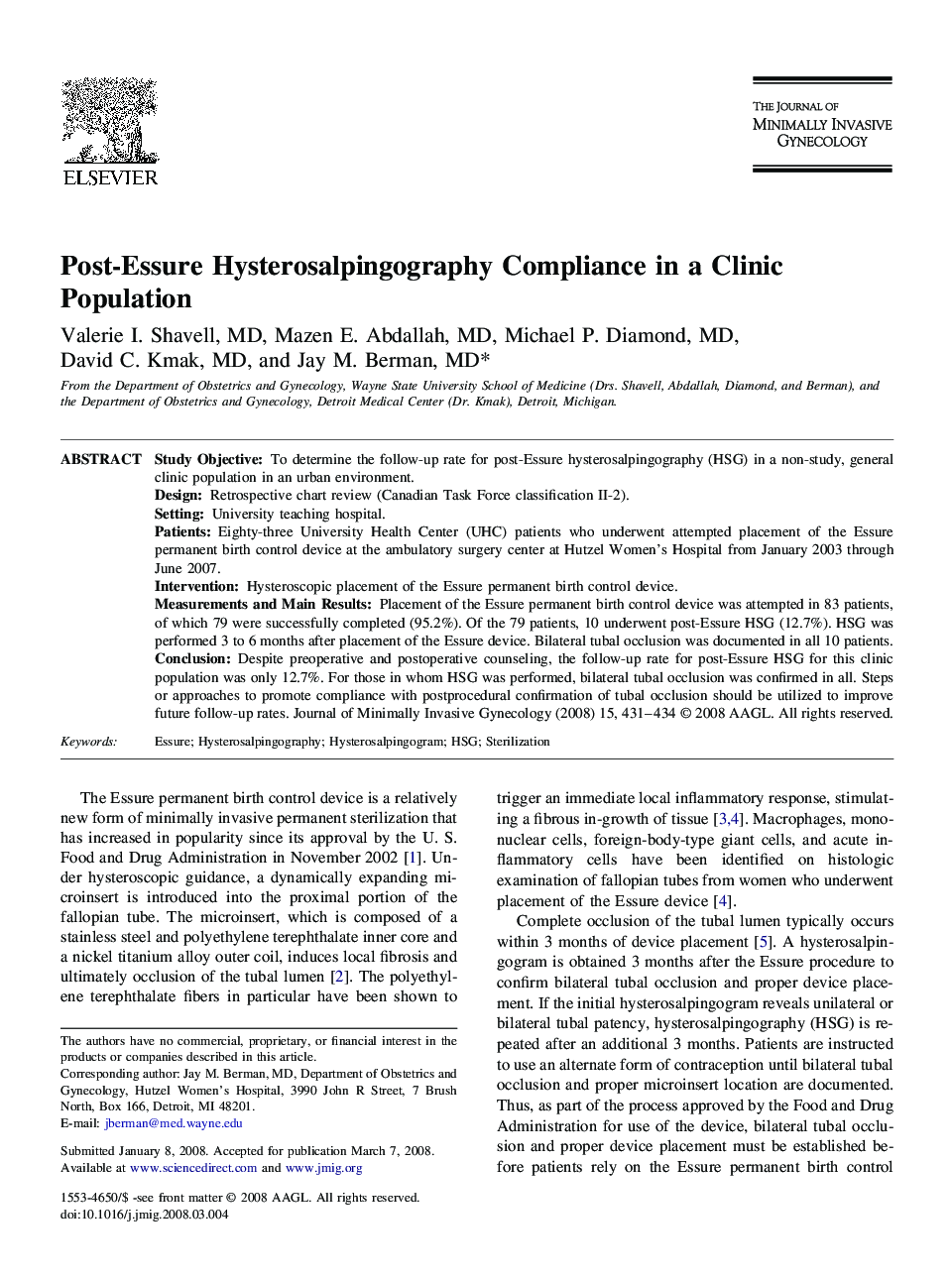| Article ID | Journal | Published Year | Pages | File Type |
|---|---|---|---|---|
| 3957513 | Journal of Minimally Invasive Gynecology | 2008 | 4 Pages |
Study ObjectiveTo determine the follow-up rate for post-Essure hysterosalpingography (HSG) in a non-study, general clinic population in an urban environment.DesignRetrospective chart review (Canadian Task Force classification II-2).SettingUniversity teaching hospital.PatientsEighty-three University Health Center (UHC) patients who underwent attempted placement of the Essure permanent birth control device at the ambulatory surgery center at Hutzel Women's Hospital from January 2003 through June 2007.InterventionHysteroscopic placement of the Essure permanent birth control device.Measurements and Main ResultsPlacement of the Essure permanent birth control device was attempted in 83 patients, of which 79 were successfully completed (95.2%). Of the 79 patients, 10 underwent post-Essure HSG (12.7%). HSG was performed 3 to 6 months after placement of the Essure device. Bilateral tubal occlusion was documented in all 10 patients.ConclusionDespite preoperative and postoperative counseling, the follow-up rate for post-Essure HSG for this clinic population was only 12.7%. For those in whom HSG was performed, bilateral tubal occlusion was confirmed in all. Steps or approaches to promote compliance with postprocedural confirmation of tubal occlusion should be utilized to improve future follow-up rates.
